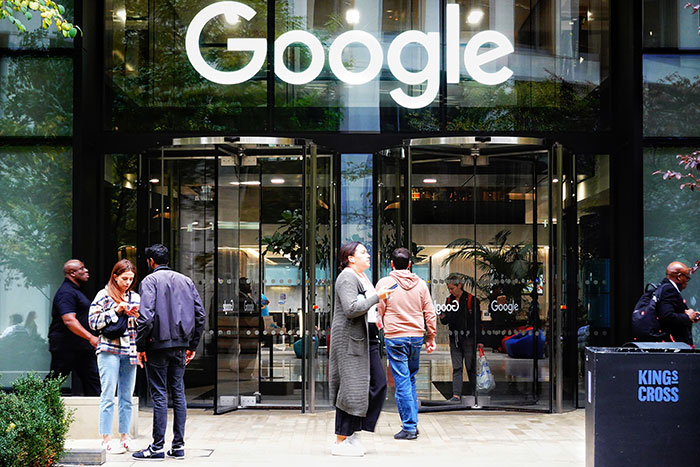In a significant move that marks the end of pandemic-era work flexibility, Google has announced a strict return-to-office (RTO) policy for its employees. Under this new directive, employees must return to the office for a minimum of three days a week or face termination. The policy, effective from June 2025, directly impacts workers who were hired for fully remote positions during the COVID-19 pandemic and those working under the assumption that remote work would be a long-term arrangement.
The Shift Toward In-Office Work
This decision by Google comes amid a broader trend in the tech industry, where companies are rethinking the remote work policies that became popular during the pandemic. According to reports, Google’s leadership is emphasizing operational efficiency and fostering in-person collaboration as the primary reasons for the change. Furthermore, the company has highlighted its increasing investment in artificial intelligence (AI) as a driver for cost-cutting measures, including the restructuring of its workforce.
As Google begins to recalibrate its workforce model, the company has made it clear that employees who were hired for remote roles must now either relocate to an office location or accept a buyout offer. This move marks a turning point in Google’s approach to remote work, a practice once considered a permanent fixture in its operations.
The “Return or Resign” Ultimatum
The new policy stipulates that all employees living within commuting distance of a Google office are required to adopt a hybrid work model, spending at least three days a week in the office. For employees unwilling to comply—whether due to personal reasons, relocation challenges, or a preference for remote work—the company has offered a buyout option in place of termination. This “return or resign” ultimatum has sparked discussions about workplace flexibility and employee autonomy in the changing landscape of corporate policies.
Interestingly, employees who were initially hired as remote workers have expressed surprise at the sudden shift. A growing sentiment on social media platforms such as X reflects the discontent, with many feeling that the pandemic-era flexibility they were promised is quickly disappearing. One user remarked, “Google’s recent shift is a sign that the days of flexible, remote work are rapidly fading in the tech world.”
Industry Trends and Comparisons
Google’s move aligns with similar actions taken by other tech giants, such as Amazon and Goldman Sachs, which have also rolled out return-to-office mandates in recent years. Amazon’s 2023 RTO policy, which led to a walkout by over 2,000 employees, and Goldman Sachs’ 5-day in-office requirement are prime examples of how major corporations are reasserting control over office attendance.
This shift is occurring in the context of broader workplace dynamics. The so-called “Great Resignation” that saw millions of employees leave their jobs in 2021 and 2022 is slowly giving way to a more stable labor market, where workers are more reluctant to leave their roles due to economic uncertainty. Google’s RTO policy reflects an effort by employers to reestablish control and reshape workplace expectations.
Employee Reactions: Concerns and Challenges
For many Google employees, the return-to-office mandate is a source of frustration, particularly for those who have built their lives around the flexibility of remote work. Relocating to an office city or commuting to an office location may be financially or logistically challenging, especially for workers with families or those residing in regions with a lower cost of living.
Sentiment on social media platforms like X further illustrates the tension this policy has created. One user noted, “Google is telling remote workers to either return to the office or accept a buyout, signaling a shift away from the flexibility we had during the pandemic.” This feedback reflects growing dissatisfaction among employees who feel their personal flexibility is being sacrificed in favor of corporate priorities.
The Bigger Picture: Rethinking the Future of Work
Google’s new policy raises broader questions about the future of work. Proponents of in-office work argue that it promotes collaboration, fosters innovation, and strengthens company culture—key benefits in the fast-paced tech industry. However, critics contend that remote work has proven just as effective, with many employees reporting higher productivity and a better work-life balance when working from home.
Moreover, Google’s push for cost-cutting measures and its focus on AI investment underline the financial pressures the company is facing. As Google seeks to compete in the rapidly evolving AI landscape, its decision to restructure its workforce is part of a broader strategy to allocate resources toward its AI initiatives.
What Lies Ahead for Google and Its Workforce?
As the June deadline approaches, Google employees are faced with a difficult decision: comply with the RTO mandate, accept a buyout, or risk termination. The outcome of this policy will likely have a significant impact on how other companies in the tech sector approach remote work in the future.
Ultimately, Google’s return-to-office ultimatum signifies a pivotal moment in the ongoing evolution of work. As one social media post succinctly put it, “AI is in, WFH is out.” Whether this shift marks the definitive end of remote work in the tech industry remains uncertain, but Google’s decision is certainly setting the stage for continued debate on the future of workplace flexibility.


